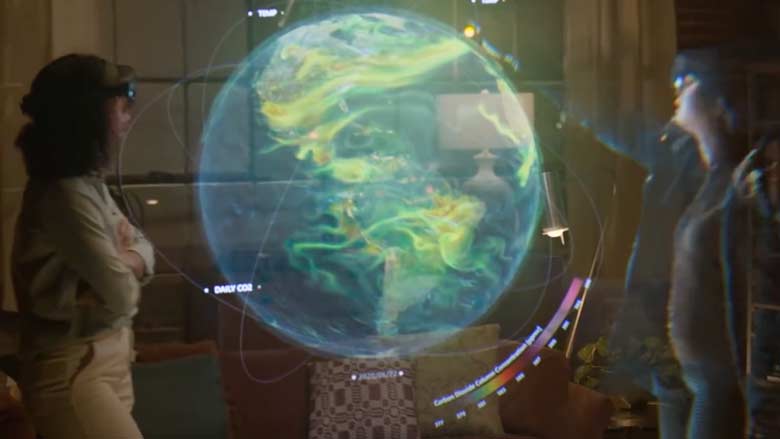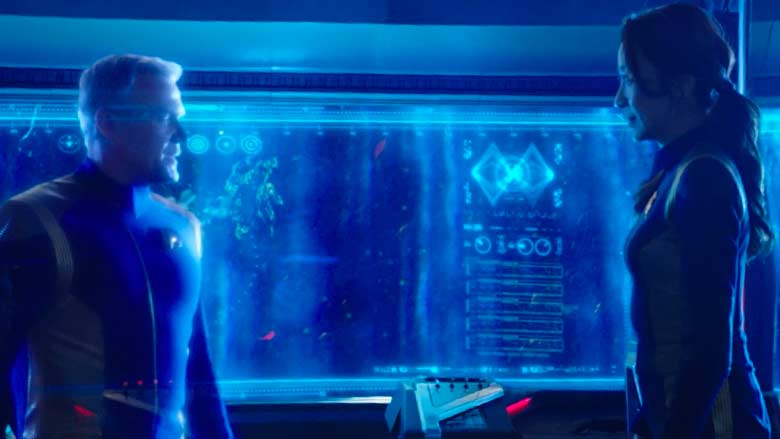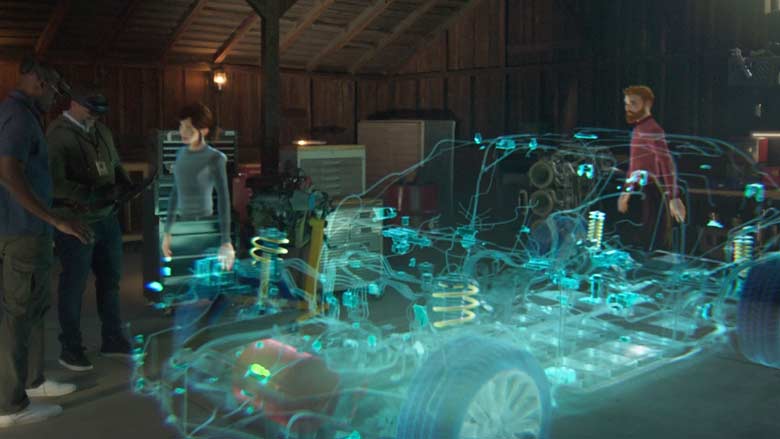Fans of Star Trek are a proud people. The shows and films represent more than just another science fiction story, but a new outlook on what humanity can be. From the very start, Trek showed us the very best of what we could accomplish.
Much of this came in the form of the incredible technology and gadgets that Kirk used, which continued with Picard. People of the 1960s saw what it would be like to have cell phones designed after Kirk’s communicator, while people in the late 80s saw Picard use a tablet computer to issue orders… that looks eerily like the iPad. It seems that Star Trek’s ability to predict the future has been very accurate.
Now, the minds at Microsoft have developed something that can be described as something even Quark would pay for. The company is calling it “Mesh,” but in essence, they have created the holo-communicator and a first stab at a real holosuite.

MicrosoftMicrosoft’s Mesh holo-communications system
If you remember, Starfleet vessels were equipped with several means of communicating with each other; visual, audio, text, and subspace. One of the methods that was not prominently shown in The Original Series or The Next Generation was holo-communication. This was undoubtedly due to both budget constraints and technical limitations of special effects from the era.
In more recent shows, like Discovery, holo-communication has been front and center as the primary way people talk from ship to ship or ship to planet. To explain why this was not seen in TOS, TNG, or the original cast films, we were told that Captain Pike (Anson Mount) disliked the holo-communication system and dismantled the unit Enterprise while he was in command.

CBSHolo-communication as seen on Star Trek: Discovery
Microsoft’s version of holo-communication uses “3D capture technology to beam a lifelike image of a person into a virtual scene.” That’s right — they said, beam.
The technology creates a full-size representation of a person from anywhere globally, as long as they are also using the Mesh system. Users must wear a set of “HoloLens” goggles to see the hologram, but it’s still pretty impressive.
The other breakthrough, which was all made public yesterday, is users’ ability to collaborate on a project in three dimensions and in real-time — together. One example they gave was a team working to fix a car. Rather than the team pick up a webcam and point it at a part of the vehicle so all can see, the Microsoft Mesh tech creates a 3D holographic image for all team members to interact with. Does that remind anyone else of the holodeck?

MicrosoftMany people collaborating through Microsoft Mesh holograms.
Suppose a person cannot be scanned and recreated as a 3D image. In that case, they can also participate in Mesh meetings and gatherings as an avatar. This would not be far off from the game Second Life or even the more familiar Star Trek: Online.
Microsoft doesn’t want us to call this just “virtual reality.” They prefer the terms augmented and mixed reality.
The company foresees this technology used in thousands of unique ways, from engineering and medical instruction to meetings and even concerts or other gatherings. This certainly beats sitting in front of a Zoom screen for hours.
“You can actually feel like you’re in the same place with someone sharing content, or you can teleport from different mixed reality devices and be present with people even when you’re not physically together,” said Microsoft’s Alex Kipman.
Perhaps this is just the beginning of the holographic world predicted by Star Trek. Maybe soon, people will be able to collaborate on complex projects together or join in the glory of reliving the Battle of Klach D’kel Brakt!
READ NEXT: How Did ‘Star Wars’ Influence the Design of the U.S.S. Discovery?


No comments:
Post a Comment